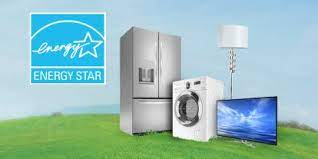Energy star products
Courtesy : sustainabilityscout.com
Appliances and electronic gadgets use energy. Consumers have only recently cared how much. Now, we can look for Energy Star certified products. Have you ever wondered what Energy Star means or where it comes from?
In 1975, Congress passed the Energy Policy and Conservation Act. It sets minimum energy-efficiency standards for major appliances.
How does Energy Star work?
Other products soon followed. In 1996, the EPA teamed up with the Department of Energy. Together, they established new categories.
So far, categories include computers and other office equipment, home appliances, home electronics other than computers, heating and cooling systems, lighting fixtures and bulbs, the home envelope (windows, insulation, and the roof), and commercial appliances.
The Energy Star program exists to encourage energy-saving innovation. It doesn’t dictate any of the details.
Energy Star is a voluntary program. No manufacturer is required to participate. A company that wants an Energy Star rating submits products to Energy Star for approval. All products in Energy Star categories must have a tag for consumers. It tells how much energy the product uses and the approximate annual energy cost. Energy Star certified products display an Energy Star logo on the tag. It tells buyers that the product is among the most energy efficient options. Looking for the Energy Star tag is one important step you can take for energy conservation.
You may have noticed that products with Energy Star certification cost more than others. It should be no surprise. Manufacturers have to spend extra money on research and development to meet the standards. They may also have higher manufacturing costs. But buy the Energy Star certified product anyway. You’ll get back the difference in price and more in lower energy bills.
How do I find Energy Star certified products?

If you shop in a store, you can see the tags on all the appliances. You can immediately see which ones have the Energy Star logo on the tag.
If you shop online, though, the manufacturer or seller may not think to display the logo. The big long product name at the top of the screen may or may not include the words Energy Star. They’ll show up in the product description somewhere, but who wants to hunt?
Fortunately, the EPA has provided a website where you can find all Energy Star certified products in one place.
Use the Energy Star Product Finder. It is organized under various broad categories:
- Appliances [residential]
- Building products
- Commercial appliances
- Data center equipment
- Electronics
- Heating & cooling
- Lighting & fans
- Office equipment
- Other (including electric vehicle chargers, pool pumps, and water coolers)
- Water heaters
Each main heading has subcategories of the kinds of products with certification. I was surprised to find that clothes dryers can have Energy Star ratings, but not ovens or microwaves. Energy Star stopped certifying programmable thermostats for a while, but then it started again.
Click on any subcategory to find a list of Energy Star certified products.
If you find something you want to buy on Amazon, please return here and click on any of the Amazon ads below, log into your account and search. Whether you’re interested in the product you clicked or not. I’ll get a little cut of the purchase price to help keep this site available. You won’t pay anything extra for helping me out. Thank you in advance!




